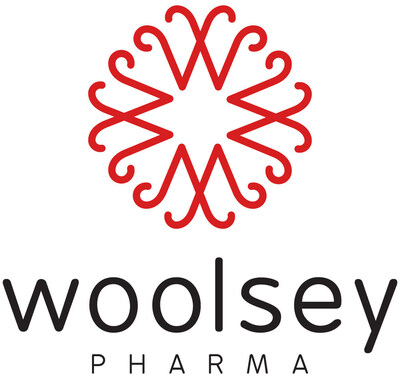Woolsey Pharmaceuticals, a clinical-stage drug development company, announced that its investigational drug, CIRARA, was well tolerated and exhibited statistically significant reductions in a key biomarker, Neurofilament Light (NfL), in the REAL Amyotrophic Lateral Sclerosis (ALS) study.
|
NEW YORK, June 19, 2024 /PRNewswire/ -- Woolsey Pharmaceuticals, a clinical-stage drug development company, announced that its investigational drug, CIRARA, was well tolerated and exhibited statistically significant reductions in a key biomarker, Neurofilament Light (NfL), in the REAL Amyotrophic Lateral Sclerosis (ALS) study. REAL (Rho kinasE inhibition in Amyotrophic Lateral sclerosis) is an open-label single- armed study designed to assess preliminary safety, tolerability, and effect on clinical outcomes as well as neurodegeneration biomarkers of BRAVYL in patients with ALS. In the first cohort of patients, the study enrolled 31 participants who were treated at a dose of 180mg/day, of whom 25 completed 24 weeks of treatment. Of that number 20 continued on to the initial extension phase of the study. On the primary endpoint of safety, BRAVYL was found to be safe and well tolerated, and no participants were withdrawn from the study for drug-related adverse events. Additionally, there have been no unexpected or concerning safety findings in the extension phase, with some of the patients treated for as long as 18 months. Importantly, BRAVYL was shown to significantly decrease the biomarker Neurofilament Light Chain (NfL) following 24 weeks of treatment. NfL is a sensitive and specific marker of cytoskeletal damage in the neuronal axon, and elevated levels of NfL in blood have been shown to be a reliable indicator of the rate of ALS disease progression. Reduced NfL levels in response to disease-modifying treatments have been shown to precede discernable clinical benefits such as prolongation of event- free survival, and improvements in clinical trajectories measured using ALSFRS-R (the ALS Functional Rating Scale – Revised), Slow Vital Capacity (SVC, a measure of breathing capacity), and muscle strength — well-accepted measures for evaluating clinical outcomes in ALS studies. A statistically significant 15% decrease (improvement) in NfL from baseline to 6 months (p<0.001) was observed. Since NfL in the ALS population tends to increase by a mean of 11% in 6 months, this suggests that 180 mg/day BRAVYL could potentially reduce NfL up to 26% versus a placebo group over 6 months. Moreover, greater decreases in NfL were correlated with less deterioration on the ALSFRS-R (Spearman's coefficient = -0.45, p=0.028) implying that early clinical benefits of reducing NfL may be seen contemporaneously with the NfL reductions by CIRARA. A "propensity matched" analysis was performed wherein 12-month clinical outcomes from REAL were compared with those from a matched cohort selected by identifying 31 patients from the Ceftriaxone ALS Study database that were most similar (based on pre-treatment age, ALSFRS-R, time from onset of ALS, and other important parameters) to each REAL patient. The rate of deterioration in ALSFRS-R was improved in REAL vs. the matched controls by 28% (p=0.12). REAL patients also had a 42% (p=0.05) slower deterioration in SVC (breathing) and a 50% (p=0.06) slower rate of muscle strength decline, driven mostly by lower limb muscles with a 71% (p=0.04) reduction in weakening and a more modest 37% (p=0.22) reduction in weakening of upper limb muscles. An analysis that matched REAL patients recruited in Australia to the Australian MND Registry (a longitudinal registry, not a study) yielded directionally similar ALSFRS-R and SVC findings while muscle strength could not be analyzed as the registry does not contain such data. Given the safety and tolerability of the 180mg/day dose, REAL has been expanded and is currently screening and plans to enroll up to 15 patients at 300 mg/day. Patients will be treated for 24 weeks with an opportunity to continue with extension treatment. ABOUT ALS ALS is a fatal neurodegenerative disease characterized by inevitable, and often rapid, decline in patients as the disorder advances (mean survival time is only two to five years). Accordingly, the ability to impede any worsening represents a meaningful advancement in efforts to enhance the prognosis and quality of life of individuals impacted by this devastating condition. ABOUT WOOLSEY PHARMACEUTICALS Woolsey Pharmaceuticals is expanding the boundaries of medical science. Our lead indication is Amyotrophic Lateral Sclerosis (ALS), a progressive and debilitating disease that ultimately is fatal. Our mission is to help usher in a new era of neurodegenerative disease treatment, saving and improving the lives of patients in need.
SOURCE Woolsey Pharmaceuticals, Inc. |





